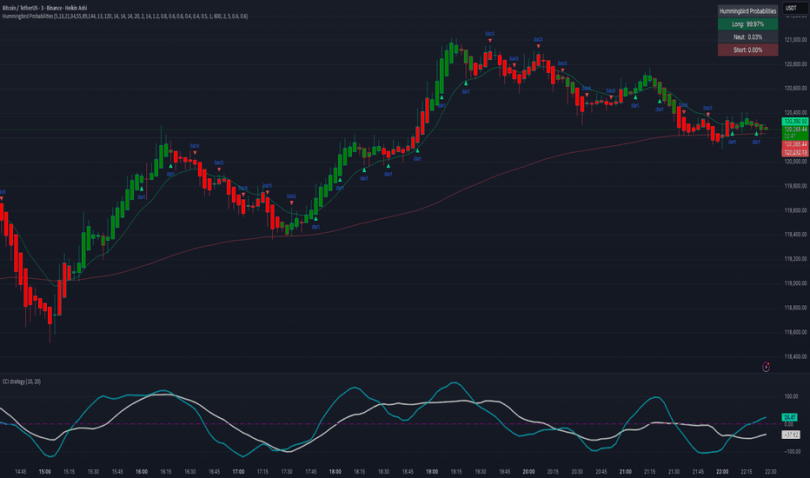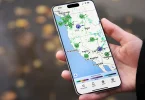Weather alerts feel urgent because they should. Yet the numbers that drive them can be read in a calm, useful way that helps families and neighborhoods act before thunder, hail, or fast-moving cells arrive. A good forecast doesn’t promise an exact outcome; it maps chances across space and time, so a plan can fit the window that matters. Think of risk in two layers that work together: the chance that storms form or hold strength over an area, and the chance that a place sits inside the path where wind, hail, or flash flooding may happen. Once those two ideas click, maps, cones, and color codes stop feeling like puzzles and start working as clear cues for packing, routing, and timing the day.
What forecast probabilities actually say
A percentage on a map is a statement about chance across many comparable days and places. A 30% thunderstorm chance for an afternoon does not mean “light rain with noise.” It means that, given the current pattern, about one time in three an area like yours would see a storm within the stated window. The number is an aid for timing, not a guarantee of how loud or long. Coverage matters too: a scattered setup means short, sharp cells that pop and fade; a more organized line means longer stretches of wind and rain. Read the clock on the alert first, then the potential hazard, and finally the coverage clue in the wording. That order turns raw numbers into a plan for errands, school runs, and commutes.
Many people learn probability better when a visual shows choices and outcomes. Away from weather, grid-style demos make this easy to grasp, and pages that explain a simple “safe-vs-risk” reveal – like the layout discussed under mines parimatch – can help the idea stick: each new reveal changes what’s left on the grid, and risk shifts with it. Forecasts echo that logic in time and space. As the day evolves, new radar, soundings, and surface data change the “grid” the atmosphere presents, so chances update. The key is to treat each update as a fresh view with the latest inputs, then check how your plan fits the current window rather than clinging to a morning snapshot.
Why a small percentage can still mean a loud afternoon
Low odds don’t equal “safe.” A 20% chance with high-impact hazards is still a day to park the car under cover, charge devices, and watch the sky near the stated hours. That number says most places in the region will stay dry; it does not say a storm can’t cross yours. The atmosphere often loads energy unevenly. A short-lived cell that forms on the wrong side of a boundary may fade in minutes, while the one that taps the right wind shear turns into a fast mover that reaches town just as school lets out. This is why alerts talk about timing windows: risk is not constant, it swells and eases. Checking again at lunch and mid-afternoon keeps the plan aligned with the real setup, without hype or guesswork.
How false alarms and misses happen – and what to do about them
Forecasts juggle two costs: telling people to prepare when storms underperform, and staying quiet when a rogue cell finds fuel and blooms fast. Both outcomes happen in healthy systems because the atmosphere is noisy and small changes shift paths. The way to live with this is simple and steady. Treat watches as a “heads up” to set the room: bring in loose items, fuel the car if a drive is planned, and load a weather app that can push polygon alerts. Treat warnings as a short fuse call to action: move indoors, avoid flooded dips and low crossings, and give trees and loose roofing extra space. This routine turns forecast noise into less stress because your choices no longer hinge on perfect calls, just on clear steps when a window opens.
- Charge phones and a small power bank; set loud alerts in one trusted weather app.
- Park under cover; move grills, chairs, and bins so they can’t turn into projectiles.
- Snap a photo of the yard and street drains; clear gutters and the nearest grate.
- Pick two safe indoor spots away from glass; agree on who grabs pets and meds.
- Plan routes that avoid low water crossings and tree-lined streets during the window.
Keep risk readable, keep choices simple
Storm days go smoother when numbers are read as timing tools, not promises. Percentages set the odds for a window, coverage hints tell how storms might appear, and updates refine both as the sky changes. Low odds can still carry high impact, so small moves – covered parking, charged phones, clear gutters – pay off even when your block stays dry. Watches invite prep; warnings call for action. With that mindset, maps and alerts stop feeling like alarms and start working like a steady guide. The forecast may shift; the routine does not. That is how a family, a school, or a shift team keeps focus when thunder rolls: clear steps, the right hour, and a plan that fits the day.





